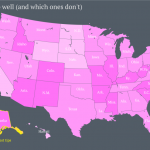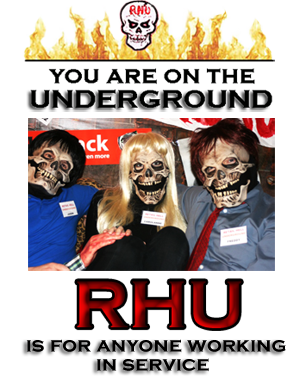The Tipping System Is a Scam—And Here are Six Ways to Game It
It’s too soon to know whether The Public Option, a new brewpub set to open in D.C. by early fall, will serve good beer, but it does promise patrons a less awkward experience than its competitors: Customers won’t have to fret over how much money to add to the bill, because waiters won’t accept tips. The Public Option may be part of a trend: Earlier this month, Manhattan’s Restaurant Riki joined a growing list of New York restaurants that don’t take tips. The Public Option’s founder says he hopes the no-tipping policy will encourage a better dynamic among waiters, kitchen staff and customers.
There’s a fairly long library of scholarship that has gone into this very subject. Defenders of tipping, traditionally, have argued that it gives waiters an incentive to provide good service. But over the years, research has shown that what customers actually reward often doesn’t have much to do with service. Here are a few things that actually elicit bigger tips.
TOUCHING THE CUSTOMER
For a 1984 paper in Personality and Social Psychology Bulletin, April Crusco and Christopher Wetzel had waitresses at two Mississippi restaurants randomly divide their customers into three groups. One group of diners wouldn’t be touched; one group would be touched on the shoulder once for about a second and a half, as the waitress returned the change at the end of the meal; and one group would be touched on the palm of the hand twice for half a second each time. Crusco and Wetzel found that touching had a significant effect on tip size, and the double-hand touch was the most effective: Customers left an average tip of 12 percent when they weren’t touched, 14 percent when they were touched on the shoulder and 17 percent when touched twice on the palm of the hand.
HAVING BLOND HAIR
In a study of 432 waitresses, Lynn found that waitresses with blond hair received larger tips than waitresses with any other hair color.
DRAWING A SMILEY FACE ON THE CHECK—BUT ONLY IF YOU’RE A WOMAN
In 1995, psychologist Bruce Rind and marketing researcher Prashant Bordia recruited a waiter and a waitress to take part in an experiment at a Philadelphia restaurant. Rind and Bordia randomly assigned the servers to draw a smiley face on the check of about half the 89 groups that dined at the restaurant over the course of a three-day period. It turned out that the waitress raised her average tip size from 28 to 33 percent when she drew a happy face, but the opposite effect held for the waiter: Drawing a smiley face decreased his tip from 21 to 18 percent. Rind and Bordia hypothesized that customers thought the smiley face was cute when women did it but effeminate when men did.
WEARING AN ORNAMENT IN THEIR HAIR
In 1980, JeriJayne Stillman and Wayne Hensley found that women received larger tips when they wore a flower in their hair and in 2012, Guguen and Jacob did a follow-up study looking at how different types of ornamentation affected tipping. They had waitresses at a restaurant in France—where tipping is unusual—wear a barrette decorated with a flower, a small bird, a sprig of black currant, or no barrette. Guguen and Jacob analyzed the tipping behaviors of 665 customers and found that men tipped 41.2 percent of the time when waitresses wore ornaments, compared to 30.9 percent when they didn’t. The effect was even stronger for female customers: Women tipped waitresses wearing barrettes 40.5 percent of the time, compared to 26.4 percent of the time if they didn’t. The type of ornament didn’t make a significant difference.
CROUCHING NEXT TO THE TABLE
Michael Lynn, a researcher at Cornell’s School of Hospitality, had servers at two restaurants in Houston either crouch next to the table when they first took customers’ orders or remaining standing throughout the encounter. Lynn found that when the servers squatted next to the table, they increased tips by, on average, 20 to 25 percent. Lynn suggests squatting may facilitate eye contact and increase feelings of “congruence” between customer and server.
WEARING RED
For a 2012 paper in the Journal of Hospitality & Tourism Research, Nicolas Guguen and Celine Jacob assigned 11 waitresses to wear black, white, green, yellow, blue or red shirts as they served over 700 customers in 5 seafood restaurants in France. Across the board, men left significantly larger tips for waitresses who wore red.
Source newrepublic.com

























Recent Comments